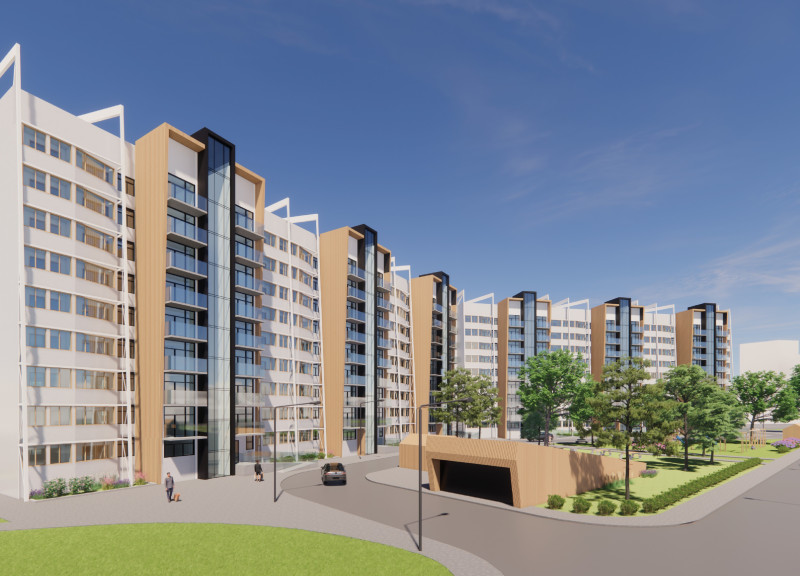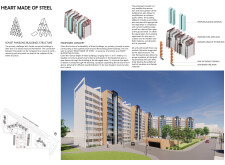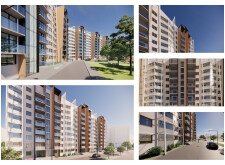5 key facts about this project
### Project Overview
"Heart Made of Steel" focuses on the revitalization of Soviet-era panel buildings located in a densely populated residential area along Navtali Uzmyri Street. The primary objective is to enhance the structural safety, accessibility, and aesthetic quality of existing buildings while integrating a new superstructure that supports and modernizes these frameworks. This approach aims to preserve the historical significance of the structures while addressing contemporary living needs.
#### Structural Strategy
The design introduces a steel-supported framework that addresses the fragility of the existing panel connections, which have been compared to a house of cards in terms of vulnerability. By implementing secondary steel columns and beams that extend through existing façades, the project redistributes loads effectively, thereby reinforcing structural integrity and reducing the spatial limitations typically associated with beam installations.
#### Material Considerations
The materials selected for the project prioritize durability and aesthetic appeal. Steel serves as the backbone for structural reinforcement, while concrete is utilized for flooring and the underground garage, ensuring robust support. The extensive use of glass in the façade promotes natural light penetration and visual connectivity with the environment. Additionally, wood is integrated into the exterior cladding to soften the façade, contributing warmth to the overall design. Insulation materials are included to enhance thermal management and energy efficiency, aligning with sustainability goals, such as the implementation of rainwater collection systems to minimize resource consumption.
This project demonstrates a commitment to adaptive reuse, enhancing the social fabric by creating safe, functional spaces that cater to community needs, including the incorporation of an underground bunker for emergencies. The design intends to foster community interaction through landscaped areas that include playgrounds and communal spaces, ultimately improving the quality of life for residents.





















































